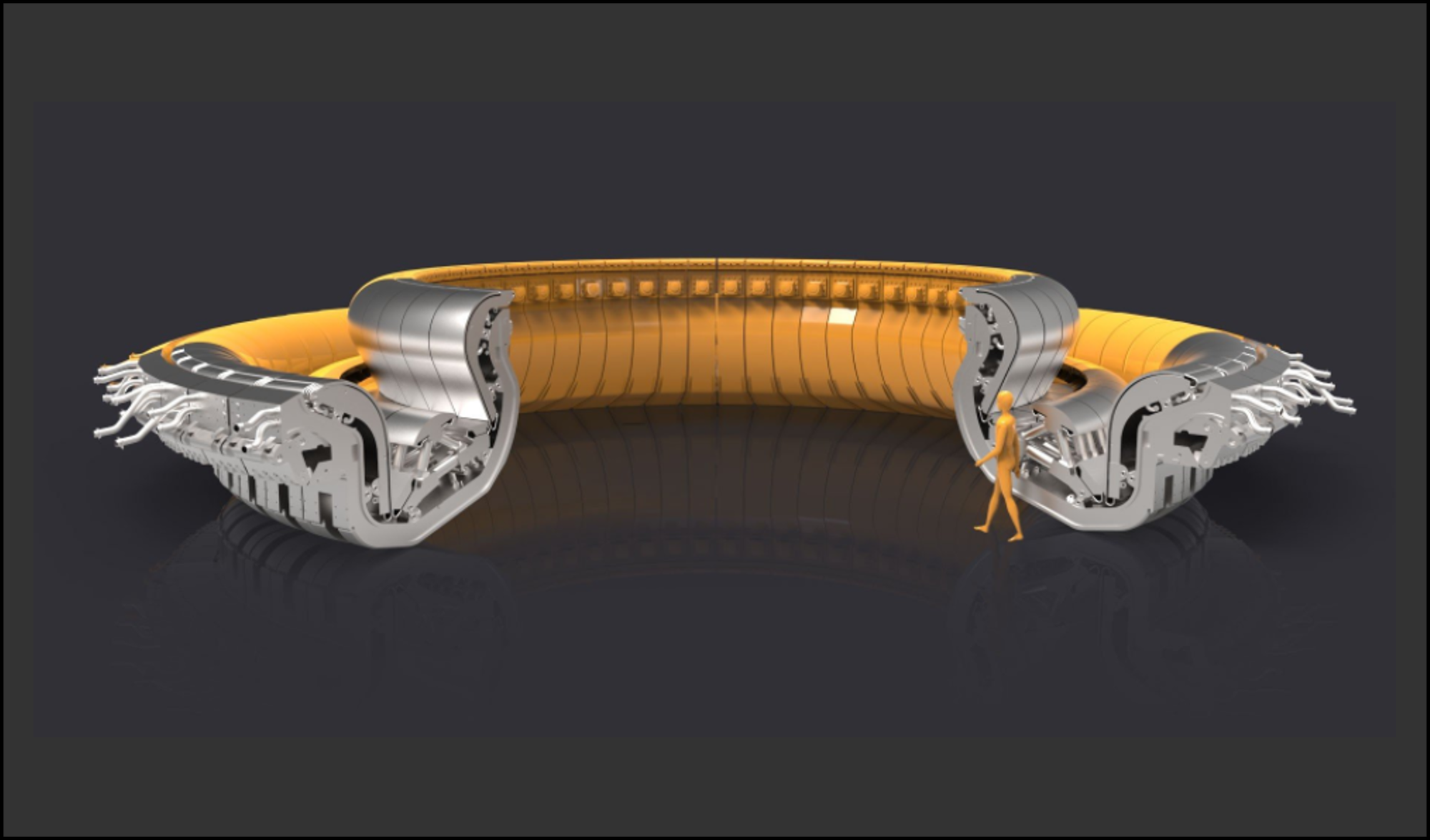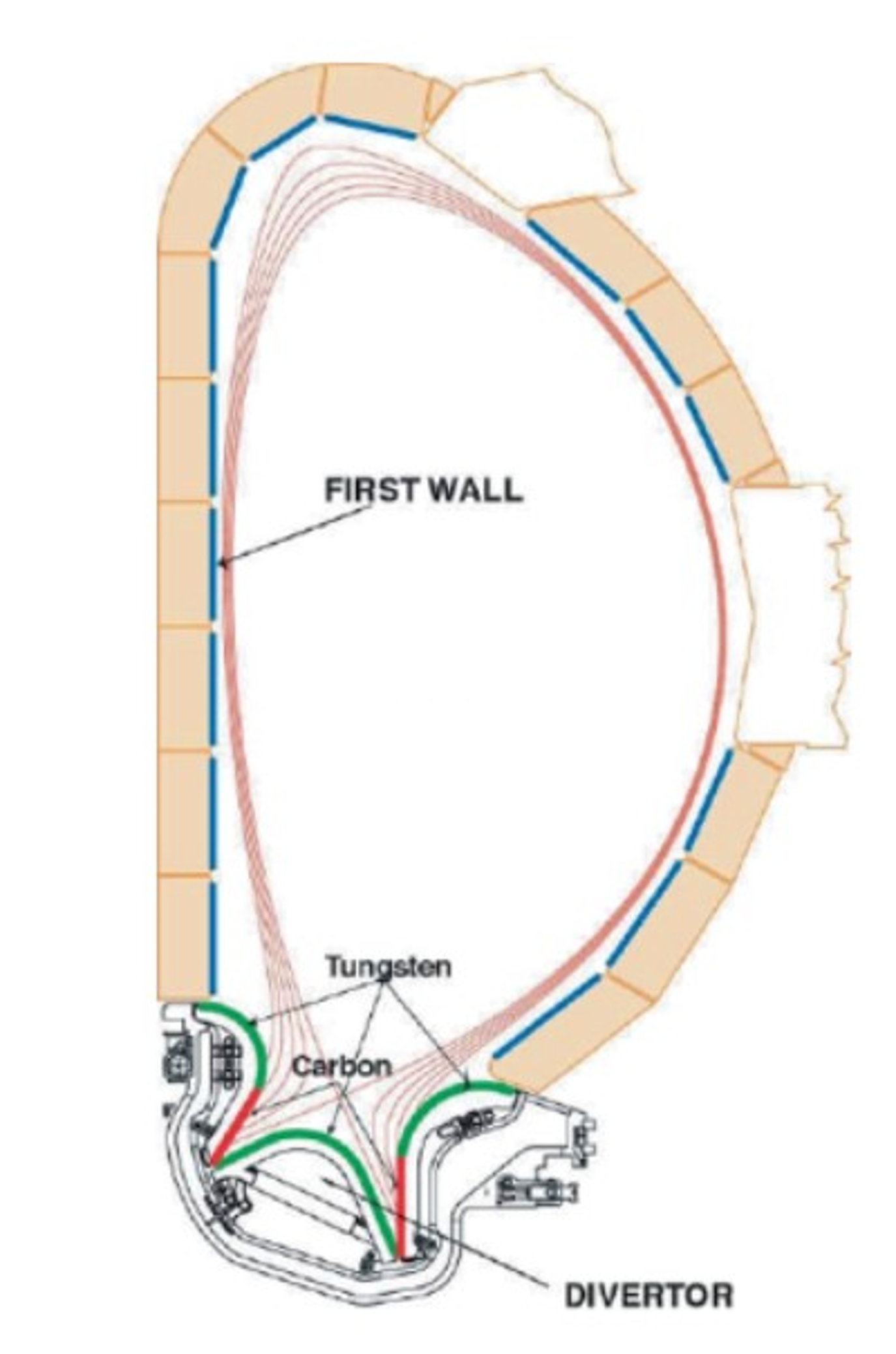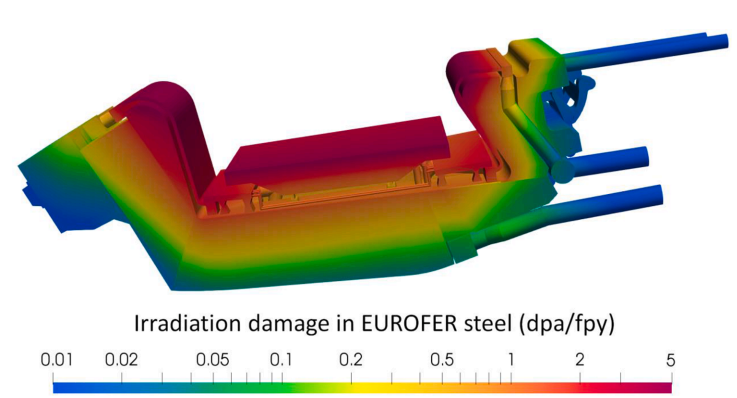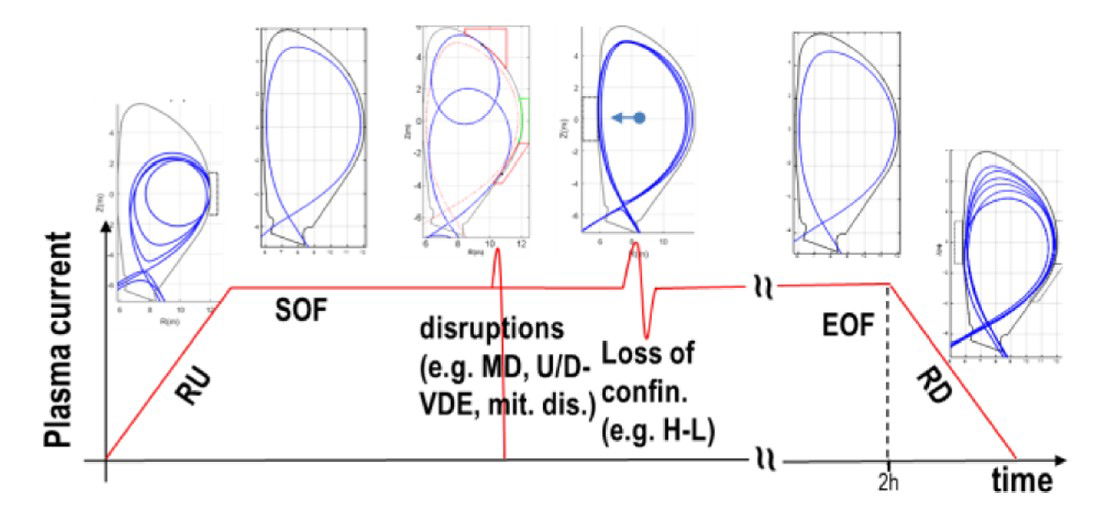Divertor and Limiter

The Divertor and Limiter are the most challenging components in the design of a Tokamak due to their respective functions of safely extracting plasma and preventing damage to the other plasma-facing components. Both devices will receive high heat loads and radiation doses: there is consequently danger of structural degradation during operation. The details of the Diverter and Limiter given on this page are taken from the EU-DEMO design.
Divertor
The Divertor has the function to exhaust the plasma safely at the end of the storage period, which for EU-DEMO is planned to be two hours. As well as removing the stored plasma, it must also remove impurities and dust produced in plasma-wall interactions. The photograph and diagram below show the location of the divertor at the bottom of the vacuum vessel of the tokamak.

Divertor in a tokamak fusion reactor

Plasma is extracted at the bottom of the vacuum vessel by the divertor
The magnetic field configuration facilitates the exhaust of the plasma with a separatrix boundary between closed and open magnetic surfaces, where the closed surfaces maintain the plasma in the tokamak and the open surfaces remove the plasma.. Beyond the separatrix the plasma enters the Scrape-off layer and exits via the divertor.

Magnetic surfaces with the Separatrix or Last Closed Flux Surface (LCFS) and X-point which facilitate the plasma exhaust to the divertor.
Because of the high radiation dose and the subsequent radiation damage, the divertor must be frequently replaced. The design specification for replacement is after 1.5 full power year of operations. To allow the replacement, which must be performed with remote handing equipment inside the vacuum vessel, the divertor is designed with 48 "cassettes", shown in the figure below. The refurbishment of the cassettes will take place ex-situ in a hot cell outside the tokamak building.

Cassette element of divertor
The next figure shows the radiation damage calculations for the steel parts of the cassette, indicating some parts reach the 6 displacements per atom limit for EUROFER before the specification time of 1.5 full power years.

Radiation damage in divertor cassette in units of displacements per atom (dpa) per full power year (fpy)
The following figure shows the further radiation damage problem of helium production causing bubble formation. This indicates levels suggesting there might be serious complications in the cassette refurbishment.

Helium production rate due to radiation damage in divertor cassette in units of atoms parts per million (appm) per full power year.
These radiation damage calculations indicate there must be improvements made to divertor designs and/or materials.
Limiters
The use of limiters is being considered in the EU-DEMO, to protect the first wall surfaces against plasma instabilities and disruptions. Several planar limiters are placed on the wall at specific toroidal and poloidal positions where a direct contact with the boundary of collapsing or moving plasma can be expected. The limiters would protrude into the plasma scrape-off-layer by 30-70 mm beyond the level of plasma facing surfaces, such that in an instability mode, the plasma would touch the limiters first.

Possible arrangement of limiters on the Breeder Blanket inner wall.
Many studies have considered the range of possible plasma displacements which impacts on the plasma walls and can be alleviated by the introduction of limiters. The studies include Maviglia et al. and Hou et al. from which the explanations and figure below are taken.
These paper considers the following events.
- Start/End Of Flattop (SOF/EOF) – steady state; plasma current Ramp Up/Down (RU/RD).
- Upward/Downward Vertical Displacement Events (U/D-VDEs). followed by an unmitigated disruption, with the plasma losing the vertical control and hitting the wall with the full thermal and magnetic energies, 1.3GJ and 1GJ respectively. Different phases are considered, including plasma-wall first contact (First Touch), Thermal and Current Quenches (TQ and CQ).
- Mitigated disruptions, with the plasma energy being dissipated by photonic radiation following a deliberate injection of matter, as a mitigation action.
- Unmitigated Major Disruptions (MD).
- Unwanted transitions between H-Mode and L-Mode.
The figure below indicates these plasma instability modes at different times of the confinement pulse which last 2 hours.

Simplified representation of the DEMO normal (i.e. RU/RD, SOF/EOF) and off-normal (e.g. disruptions, loss of confinement) plasma phases
The illustrations below give examples of heat loads on the limiters in steady state confinfinement and in some examples of distruptions.

Examples of peak heat flux for steady state (SOF) and transient cases (i.e. Mitigated disruption, D-VDE and a conservative case of loss of confinement).
With their sacrificial role, the limiters become the components in the tokamak with the highest radiation damage and must be replaced the most frequently.